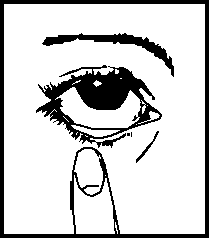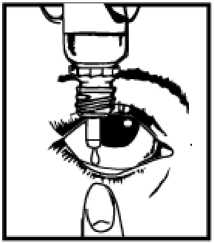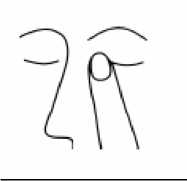Dorzolamide/Timolol 20 Mg/Ml + 5 Mg/Ml Eye Drops Solution
PACKAGE LEAFLET: INFORMATION FOR THE USER Dorzolamide/Timolol 20 mg/ml + 5 mg/ml Eye drops, solution
Read all of this leaflet carefully before you start using this medicine because it contains important information for you.
• Keep this leaflet. You may need to read it again.
• If you have any further questions, ask your doctor or pharmacist.
• This medicine has been prescribed for you only. Do not pass it on to others. It may harm them, even if their signs of illness are the same as yours.
• If you get any side effects, talk to your doctor or pharmacist. This includes any possible side effects not listed in this leaflet, See section 4.
What is in this leaflet:
1. What Dorzolamide/Timolol Eye Drops is and what it is used for
2. What you need to know before you use Dorzolamide/Timolol Eye Drops
3. How to use Dorzolamide/Timolol Eye Drops
4. Possible side effects
5. How to store Dorzolamide/Timolol Eye Drops
6. Contents of the pack and other information
1. What Dorzolamide/Timolol is and what is used for
Dorzolamide/Timolol eye drops contains two medicines: dorzolamide and timolol.
Dorzolamide belongs to a group of medicines called "carbonic anhydrase inhibitors". Timolol belongs to a group of medicines called "beta-blockers". These medicines lower the pressure in the eye in different ways.
Dorzolamide/Timolol is prescribed to lower raised pressure in the eye in the treatment of glaucoma when beta-blocker eye drop medicine used alone is not adequate.
2. What you need to know before you use Dorzolamide/Timolol Eye Drops
Do not use Dorzolamide/Timolol eye drops solution
• If you are allergic to dorzolamide hydrochloride, timolol maleate or any of the other ingredients of this medicine (listed in section 6)
• If you have now or have had in the past respiratory problems such as asthma, severe chronic obstructive bronchitis (severe lung disease which may cause wheeziness, difficulty in breathing and/or long-standing cough)
• If you have certain heart diseases, including some types of heart rhythm disturbances producing an abnormally slow heart rate or severe heart failure)
• If you have severe kidney problems.
• If you have excess acidity of the blood caused by a build up of chloride in the blood (hyperchloraemic acidosis).
If you are not sure whether you should use Dorzolamide/Timolol, contact your doctor or pharmacist
Warning and precautions
Talk to your doctor or pharmacist before using dorzolamide/timolol.
Before you use this medicine, tell your doctor about any medical or eye problems you have now or
have had in the past, especially
• Coronary heart disease (symptoms can include chest pain or tightness, breathlessness or choking), heart failure, low blood pressure
• Disturbances of heart rate such as slow heart beat
• Breathing problems, asthma or chronic obstructive pulmonary disease (lung disease which may cause wheeziness, difficulty in breathing and/or long-standing cough)
• Poor blood circulation disease (such as Raynaud's disease or Raynaud's syndrome)
• Diabetes as timolol may mask the signs and symptoms of low blood sugar (hypoglycaemia)
• Overactivity of the thyroid gland as timolol may mask signs and symptoms
You should also tell your doctor about any allergies or allergic reactions including hives, swelling of the face, lips, tongue, and/or throat which may cause difficulty in breathing or swallowing.
If you have a history of heart disease your doctor may wish to monitor your pulse rate and other signs of this disease while you are using this medicine.
Tell your doctor if you have muscle weakness or have been diagnosed as having myasthenia gravis.
Tell your doctor before you have an operation that you are using Dorzolamide/Timolol as timolol may change effects of some medicines used during anaesthesia.
If you develop any eye irritation or any new eye problems such as redness of the eye or swelling of the eyelids, contact your doctor immediately.
If you suspect that Dorzolamide/Timolol is causing an allergic reaction or hypersensitivity (for example, skin rash, or redness and itching of the eye), stop using it and contact your doctor immediately.
Tell your doctor if you develop an eye infection, receive an eye injury, have eye surgery, or develop a reaction including new or worsening symptoms.
When Dorzolamide/Timolol is instilled into the eye it may affect the entire body.
If you wear soft contact lenses, you should consult your doctor before using this medicine (see ‘Important information about some of the ingredients of Dorzolamide/Timolol’ below).
Children and adolescents
_There is limited experience with this medicine in infants and children.
Use in the elderly
In studies with dorzolamide/timolol, its effects were similar in both elderly and younger patients.
Use in _patients with liver impairment
Tell your doctor about any liver problems you now have or have suffered from in the past.
Other medicines and Dorzolamide/Timolol
Dorzolamide/Timolol can affect or be affected by other medicines you are using, including other eye drops for the treatment of glaucoma. Tell your doctor if you are using or intend to use medicines to lower blood pressure, heart medicine or medicines to treat diabetes. Tell your doctor or pharmacist if you are taking, have recently taken or might take any other medicines. This is particularly important if you are:
• taking medicine to lower blood pressure or to treat heart disease (such as calcium channel blockers, B-blockers or digoxin)
• taking medicines to treat a disturbed or irregular heartbeat such as calcium channel blockers, B-blockers, quinidine (which may also be used to treat some types of malaria) or digoxin
• using another eyedrop that contains a B-blocker
• taking another carbonic anhydrase inhibitor such as acetazolamide.
• taking a parasympathomimetic medicine which may have been prescribed to help you pass urine. Parasympathomimetics are also a particular type of medicine which are sometimes used to help restore normal movements through the bowel
• taking medicines to treat diabetes
• taking medicines to treat depression such as fluoxetine or paroxetine.
• taking a sulfa drug.
• taking epinephrine (adrenaline).
Pregnancy, breast-feeding and fertility
Use in pregnancy
Do not use Dorzolamide/Timolol if you are pregnant unless your doctor considers it necessary. Tell your doctor if you are pregnant or intend to become pregnant.
Use in breast-feeding
Do not use Dorzolamide/Timololif you are breast-feeding. Timolol may get into your milk. Tell your doctor if you are breast-feeding or intend to breast-feed.
Ask your doctor or pharmacist for advice before taking any medicine.
Driving and using machines
No studies on the effects on the ability to drive or use machines have been performed. There are side effects associated with Dorzolamide/Timolol, such as blurred vision, which may affect your ability to drive and/or operate machinery. Do not drive or operate machinery until you feel well or your vision is clear.
Dorzolamide / Timolol contains Benzalkonium Chloride
This medicinal product contains the preservative benzalkonium chloride and may causes eye irritation. Avoid contact with soft contact lenses. It is important that your lenses are removed before using your eye drops and not put back into your eyes until 15 minutes after using your eye drops. Your doctor can explain this to you. Benzalkonium chloride is known to discolour soft contact lenses.
3. How to use Dorzolamide/Timolol Eye Drops
Always use this medicine exactly as your doctor or pharmacist has told you. Check with your doctor or pharmacist if you are not sure.
The appropriate dosage and duration of treatment will be established by your doctor.
The recommended dose is one drop in the affected eye(s) in the morning and in the evening.
If you are using this medicine with another eye drop, the drops should be instilled at least 10 minutes apart.
Do not change the dose of your medicine without consulting your doctor.
Do not allow the tip of the container to touch your eye or areas around your eye. It may become contaminated with bacteria that can cause eye infections leading to serious damage of the eye, even loss of vision. To avoid possible contamination of the container, wash your hands before using this medicine and keep the tip of the container away from contact with any surface. If you think your medication may be contaminated, or if you develop an eye infection, contact your doctor immediately concerning continued use of this bottle.
Instructions _for use
You may find it easier to apply your drops in front of a mirror.
1. Before using the medication for the first time, be sure the tamper seal is unbroken.
2. To open the bottle, unscrew the cap
3. Tilt your head back and pull your lower eyelid down slightly to form a pocket between your eyelid and your eye:

4. Invert the bottle, and press lightly on the sides of the bottle until a single drop is dispensed into
the eye as directed by your doctor. DO NOT TOUCH YOUR EYE OR EYELID WITH THE DROPPER TIP.

5. Repeat steps 3 & 4 with the other eye if instructed to do so by your doctor.
6. Replace the cap by turning until it is firmly touching the bottle.
7. The dispenser tip is designed to provide a pre-measured drop; therefore, do not enlarge the hole of the dispenser tip.
After using Dorzolamide/Timolol, press a finger into the corner of your eye, by the nose (as in the picture below) for 2 minutes. This helps to stop timolol getting into the rest of the body.

If you use more Dorzolamide/Timolol than you should
If you put too many drops in your eye or swallow any of the contents of the bottle, among other effects, you may become light-headed, have difficulty breathing or a headache, feel that your heart rate has slowed, feel sick or tired. Contact your doctor immediately.
If you forget to use Dorzolamide/Timolol
It is important to use your medicine as prescribed by your doctor. If you miss a dose, apply it as soon as possible. However, if it is almost time for the next dose, skip the missed dose and go back to your regular dosing schedule. Do not apply a double dose to make up for the forgotten dose.
If you want to stop using this medicine talk to your doctor first. Never abruptly stop using this medicine since this may worsen certain symptoms, especially if you have coronary heart disease or an overactive thyroid.
If you have any further questions on the use of this medicine, ask your doctor or pharmacist.
4. Possible side effects
Like all medicines, this medicine can cause side effects, although not everybody gets them. If they do occur, you may need medical attention.
You can usually carry on taking the drops, unless the effects are serious. If you're worried, talk to a doctor or pharmacist. Do not stop using Dorzolamide/Timolol without speaking to your doctor.
If you develop allergic reactions including hives, swelling of the face, lips, tongue, and/or throat which may cause difficulty in breathing or swallowing, you should stop Dorzolamide/Timolol and talk to your doctor immediately.
The following side effects have been reported with Dorzolamide/Timolol or one of its components either during clinical trials or during post-marketing experience. Like other medicines applied into the eyes, timolol is absorbed into the blood. This may cause similar side effects to those seen with intravenous and/or oral beta-blocking agents. The incidence of side effects after topical ophthalmic administration is lower than when medicines are, for example, taken by mouth or injected. Listed side effects include reactions seen within the class of beta-blockers when used for treating eye conditions:
Very common: may affect more than 1 in 10 _people
• Burning and stinging of the eye(s).
• Taste disturbances.
Common : may affect up to 1 in 10 _people
• Signs and symptoms of eye and/or eyelid irritation (e.g. burning, stinging, itching, tearing, redness), inflammation of the eyelid, inflammation of the cornea, corneal erosion (damage to the front layer of the eyeball), decreased corneal sensitivity (not realising you have got something in your eye and not feeling pain), dry eyes, blurred vision
• Headache
• Sinusitis (feeling of tension or fullness in the nose)
• Feeling sick (nausea)
• Fatigue
Uncommon : may affect up to 1 in 100 _people
• Dizziness, depression
• Inflammation of the iris (the coloured part of the eye), blurred vision (in some cases due to withdrawal of medication to treat excessive contraction of the pupil of the eye)
• Slow heart rate, fainting
• Difficulty breathing
• Indigestion
• Kidney stones (often marked by a sudden onset of excruciating, cramping pain in the low back and/or side, groin, or abdomen)
Rare : may affect up to 1 in 1000 _people
• Systemic lupus erythematosus (an immune disease which may cause an inflammation of internal organs)
• Tingling or numbness of the hands or feet, unusual sensations like pins and needles, difficulty sleeping (insomnia), nightmares, memory loss, increases in signs and symptoms of muscle
disorder myasthenia gravis (unusual muscle weakness or pain not caused by exercise or tiredness), decreased sex drive, stroke, reduced blood supply to the brain
• Detachment of the layer below the retina that contains blood vessels following filtration surgery which may cause visual disturbances, drooping of the upper eyelid (making the eye stay halfclosed), double vision, eyelid crusting, swelling of the cornea (with symptoms of visual disturbances), low pressure in the eye; transient shortsightedness, eye pain,
• Ringing noises in your ear
• Low blood pressure, changes in the rhythm or speed of the heartbeat, chest pain, palpitations (a quicker and/or irregular heartbeat), oedema (fluid build-up), congestive heart failure (heart disease with shortness of breath and swelling of the feet and legs due to fluid build-up), a type of heart rhythm disorder, heart attack, cold hands and feet, Raynaud's phenomenon (poor blood circulation which makes the toes and fingers numb and change colour), leg cramps and/or leg pain when walking (claudication)
• Shortness of breath, feeling out of breath, runny or stuffed nose, nose bleed, constriction of the airways in the lungs (predominantly in patients with pre-existing disease), cough
• Throat irritation, dry mouth
• Diarrhoea
• Rash or inflammation of the skin, skin rash with white silvery coloured appearance (psoriasiform rash)or worsening of psoriasis, severe skin reactions, hair loss
• Peyronie’s disease (which may cause a curvature of the penis)
• Generalised allergic reactions including swelling beneath the skin that can occur in areas such as the face and limbs, and can obstruct the airway which may cause difficulty swallowing or breathing, hives or itchy rash, localised and generalised rash, itchiness, severe sudden life-threatening allergic reaction
Not known: _ frequency cannot be estimated_ from the available data
• Low blood glucose levels
• Heart failure
• Abdominal pain, vomiting, changes in taste
• Muscle pain not caused by exercise
• Sexual dysfunction
In very rare cases, some patients with severe damage to the clear layer at the front of the eye (the
cornea) have developed cloudy patches on the cornea due to calcium build-up during treatment.
Reporting of side effects
If you get side effects, talk to your doctor or pharmacist or nurse. This includes any possible side
effects not listed in this leaflet.
You can also report side effects directly via the Yellow Card Scheme at:
By reporting side effects you can help provide more information on the safety of this medicine.
5. How to store Dorzolamide/Timolol Eye Drops
• Keep this medicine out of the sight and reach of children.
• Do not use this medicine after the expiry date which is stated on the bottle and carton. The expiry date refers to the last day of that month.
• Store below 30°C.
• Do not refrigerate or freeze
• Do not transfer Dorzolamide/Timolol into another container, it might get mixed up or contaminated.
• Dorzolamide/Timolol should be used within 28 days after the bottle is first opened. Discard the bottle with any remaining solution after that time.
• Do not throw away any medicines via wastewater or household waste. Ask your pharmacist how to throw away medicines you no longer use. These measures will help protect the environment.
6. Contents of the pack and other information
What Dorzolamide/Timolol eye drops contains
• The active substances are dorzolamide and timolol. Each millilitre contains 20 mg dorzolamide as dorzolamide hydrochloride and 5 mg timolol as timolol maleate.
• The other ingredients are hydroxyethylcellulose, mannitol, sodium citrate, sodium hydroxide, and water for injections. Benzalkonium chloride (0.075 mg/ml) is added as a preservative.
What Dorzolamide/Timolol eye drops looks like and contents of the pack
• Colourless, clear, viscous solution, free from visible particles in white bottles with white droppers and yellow, tamper proof cap.
• Each bottle contains 5 ml of solution. It is available in pack sizes of 1 x 5ml, 3 x 5ml and 6 x 5ml. Not all pack sizes may be marketed.
Marketing Authorisation Holder and Manufacturer
Marketing Authorsation Holder is: ratiopharm GmbH, Germany
This leaflet was last revised in November 2014
PL 15773/0918